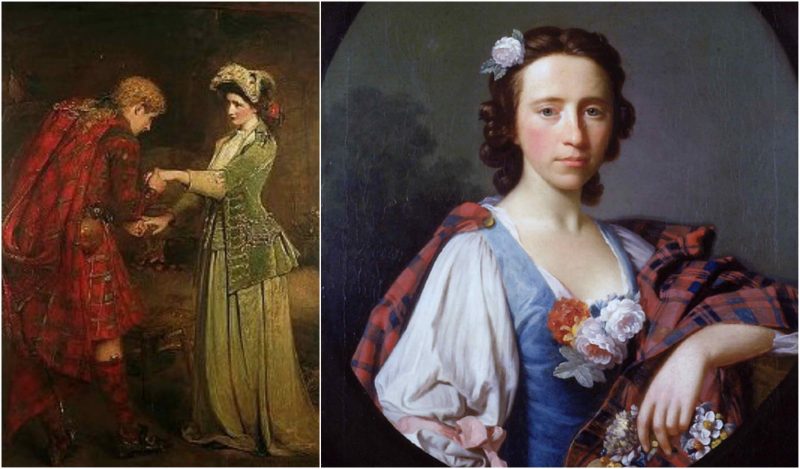Flora MacDonald was born in 1722 and was a famous Jacobite heroine. She was the daughter of Ranald MacDonald of Milton, who died when Flora was just a child, and grew up on the island of South Uist in the Outer Hebrides of Scotland.
After his death, Flora’s mother was abducted and forced to marry Hugh MacDonald of Armadale. She was raised by her father’s cousin and chief of the clan – the Macdonalds of Clanranald.
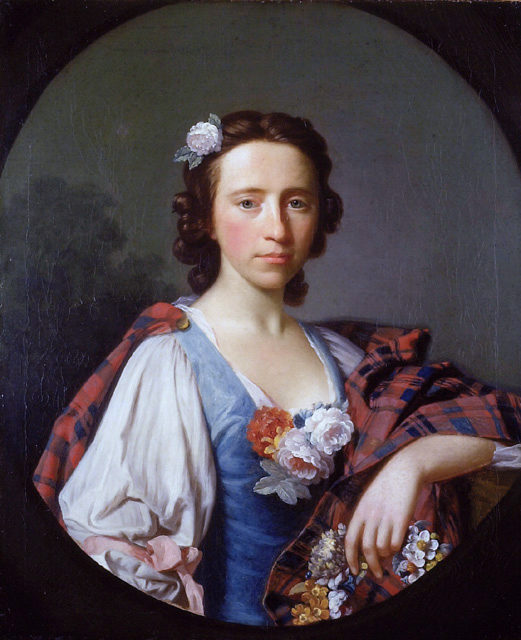
In 1745, Prince Charles Edward Stuart, or Bonnie Prince Charlie as he was affectionately known, led the second Jacobite Uprising to overthrow King George II, but was defeated at the battle of Culloden Moor in 1746 and had to escape to save his life. After two months of running and hiding, Bonnie Prince Charlie arrived at the island of South Uist.
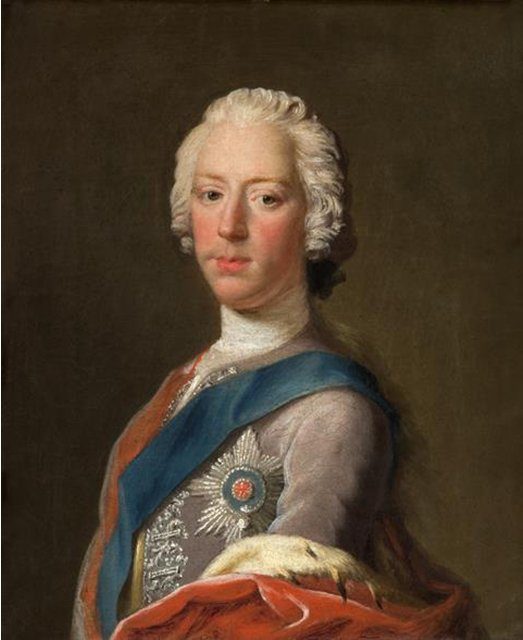
At the time, Flora was 24 years old and engaged to Allan MacDonald, who was serving alongside her stepfather in the Hanovarian army of King George II. As a matter of fact, the whole island was controlled by the Hanoverian government through the local militia, but the MacDonalds clan were informally supporting the Jacobite cause.
Bonnie Prince Charlie asked Flora to help him escape the island. She hesitated, but after a while, the Prince managed to convince her. She made a promise to help him. Flora got permission from her stepfather, the commander of the local militia, to travel from Uist to the mainland accompanied by a manservant, an Irish spinning maid named Betty Burke, and a boat’s crew of six men. The prince was disguised as Betty Burke and left Benbecula on 27 June 1746.
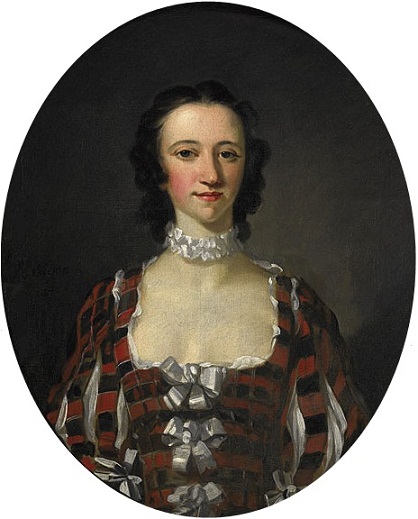
However, he didn’t land on the mainland but on the Isle of Skype. They first landed on the Waternish peninsula, where the party was rejected and had to land in the small township of Kilbride. The Prince remained hidden in the rocks while Flora searched for help from the local men, who agreed to take the Prince to Portee and then to Glam on the island of Raasay.
Flora McDonald accompanied him to the island of Raasay from where the Prince sailed safely to France. They never met again, but it said that he gave Flora a locket containing his portrait as a gift. In the meantime, the talk of the boatmen raised suspicion of Flora, who was arrested and brought to London for questioning. She was imprisoned in the Tower of London for aiding the escape of the Prince. During her interrogation, she told the Duke of Cumberland that she acted from charity and would have helped the Duke himself were he in defeat and distress.
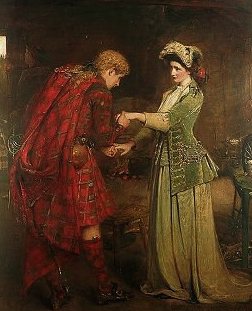
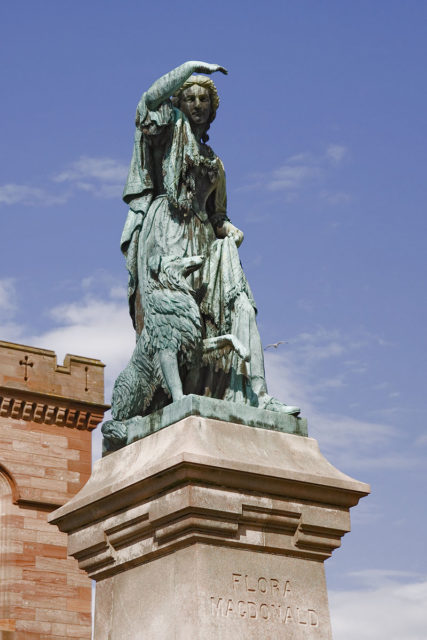
Her imprisonment in the Tower didn’t last long, and she was released to live under the guard of a “messenger.” After the Act of Indemnity was passed in 1747, she was released and went back to the island of South Uist. However, she did not exactly live happily ever after.
She married her fiancee Allan MacDonald in 1750, and in 1774 they both had to leave the island due to Allan’s debts. They moved to North Carolina with their older children while the younger ones remained in Scotland. They arrived in America at the time of the outbreak of the American Revolution and stood on the side of the British.
Once again, the MacDonalds lost everything when the American rebels burned their plantation. Allan was captured and in 1779, Flora managed to escape back to Europe with her daughter. And yet their troubles weren’t over – the merchant ship they were traveling on was attacked by French privateers. During the fight, she refused to leave the ship and was wounded on the hand.
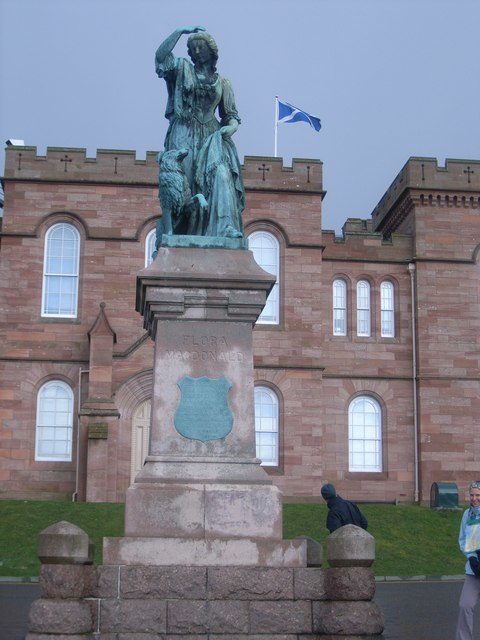
After the war ended in 1784, Allan also returned back home and managed to regain possession of the estate in Kingsburgh. The MacDonald family had a large family of sons, who mostly entered the army or navy, and two daughters. Flora died there in 1790, at the age of 68. She is buried in the Kilmuir Cemetery.
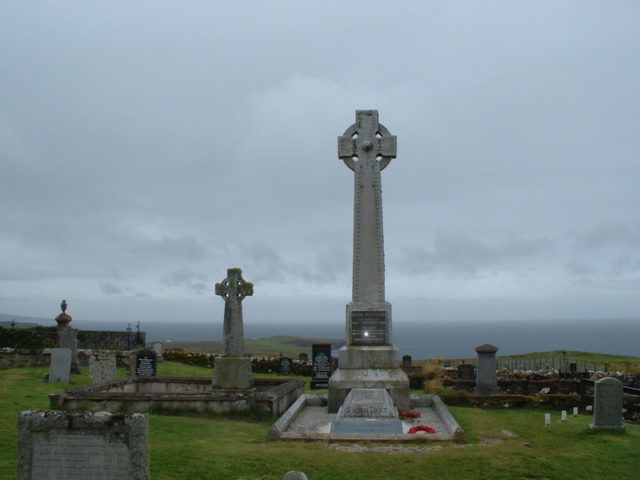
Here is another story from us: Clara Barton: The nurse who founded the American Red Cross
Samuel Johnson’s tribute to her is engraved on her memorial: “Flora Macdonald. Preserver of Prince Charles Edward Stuart. Her name will be mentioned in history and if courage and fidelity be virtues, mentioned with honor.”
